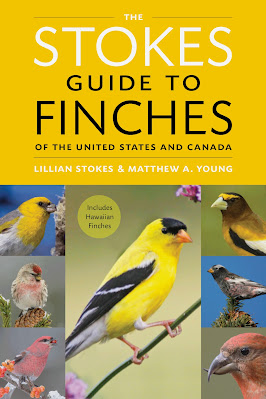Monday, November 06, 2023
Palm Warbler Migration Now!
Tuesday, October 31, 2023
Saturday, September 23, 2023
Winter Finch Forecast is Coming! Red Crossbills!
Prime Time for Hawk MIgration
Wednesday, May 31, 2023
Oranges for Red-bellied Woodpeckers
Monday, May 29, 2023
Offer Dog Fur For Birds!
Santa Chickadee. Offer it and they will build! I put Corgi fur, compliments of Abby and Andre, out in this suet basket as nest material for birds. While the chickadee photo is from another time, I just saw a titmouse go to the suet holder and take a big mouthful of fur and fly off into the woods. Birds like chickadees, titmice, and nuthatches nest in natural cavities or birdhouses and may include material like this fur in their nests. It brings me a lot of joy to offer birds things like bird seed, birdhouses, suet, oranges, bird baths, nesting materials, etc. which can make their lives easier. Win-win!
Friday, May 26, 2023
Prothonotary Warbler Golden Beauty!
female
Prothonotary Warbler, a golden treasure in the greenery! Being more heard than seen now across a river from conservation land in Concord, MA. It is considered uncommon here because its breeding range is a bit south and across much of the country's eastern half. These photos were taken on Sanibel Island during migration. Prothonotary Warblers breed in cavities in standing dead trees along rivers and in forested wetlands. I remember once canoeing along a small swampy river in the New Jersey Pine Barrens and seeing multiple Prothonotary Warblers, like luminary candles along the edges, lighting our way.
Tuesday, May 16, 2023
Birding is a Big Tent, Mother's Day walk
Friday, May 05, 2023
Orioles Have Arrived!!
Just arrived here in MA two days ago! To attract Baltimore Orioles offer orange halves on a platform to feed hungry orioles when they arrive and before the trees have leafed out and insects are plentiful.
Tuesday, May 02, 2023
Bluebird of Happiness has arrived!!
Sunday, April 23, 2023
Orioles Are Arriving Soon!
Tuesday, April 18, 2023
Purple Finches Coming Through!
Thursday, March 16, 2023
What Birds Are Singing Now?
Who is singing now? Just a sampling of the birds singing here in MA now (yes, female cardinals sing, as do many female birds). Snow on the ground does not stop them. Their hormones triggered by day length, are their directing force to herald a new season of reproduction.
Sunday, March 12, 2023
Eastern Bluebird Thoreau Quote
Monday, March 06, 2023
ANNOUNCING THE STOKES GUIDE TO THE FINCHES OF THE UNITED STATES AND CANADA coming Sept. 2024
New! THE STOKES GUIDE TO FINCHES OF THE UNITED STATES AND CANADA
by Lillian Q. Stokes and Matthew A. Young
The complete guide to finches of the United States and Canada, including a special section on Hawaiian Finches. A publishing first! Coming to you September 17, 2024, published by Little, Brown and Company.
From finch fanatics to fledgling finch fans, from goldfinches to crossbills, the Stokes Guide to Finches of the United States and Canada finally gives birders and some of America’s favorite birds their due–a guide to all things finch!
This authoritative guide will include beautiful photos; detailed identification information on each finch species’ plumages, subspecies, and voice; the latest range maps; complete information on all aspects of the lives of North American finches; rare and vagrant species of finch; special section on Hawaiian finches, the honeycreepers, one of the most endangered groups of finches; the latest scientific studies; extensive information on finch irruptions, conservation, research, attracting finches and much more. Authoritative, fun and accessible, this guide will appeal to novice through advanced birders and capture the spirit and personality of this amazing group of birds. Stay tuned for exciting updates!
Lillian Q. Stokes is an award-winning author and nature photographer who coauthored 35 Stokes Guides on birds and nature, including Stokes Field Guide to the Birds of North America, which have sold over 5 million copies. She was the host and producer of the first PBS national birding tv shows. Lillian was captivated by Red Crossbills which she studied during the legendary 2020-2021 finch superflight, and she was moved to tell their story and the story of their finch relatives. As a former psychiatric social worker, Lillian recognizes the wellness benefits of connecting people to nature and that has been a continuing goal of her work.
Matthew A. Young is a nationally recognized finch and Red Crossbill expert and founder and president of the Finch Research Network. Matt got hooked on Red Crossbills as a young birder at Yellowstone Falls when Red Crossbills descended over him. Over the last ~25 years he’s worked in the social work field with special needs adolescents for almost 10 years, and worked at the Cornell Lab of Ornithology across 15+ years where he was and Audio Engineer on several audio guides and Merlin packs. Matt works in the social work field as a Care Manager where connecting people to nature continues to be a desired goal.
Bluebird in snowstorm, came to suet and hulled sunflower.
Tuesday, February 14, 2023
Saturday, February 04, 2023
Feed The Birds in Severe Cold, They Need It!
Thursday, January 19, 2023
White-winged Crossbills at feeders!
















































